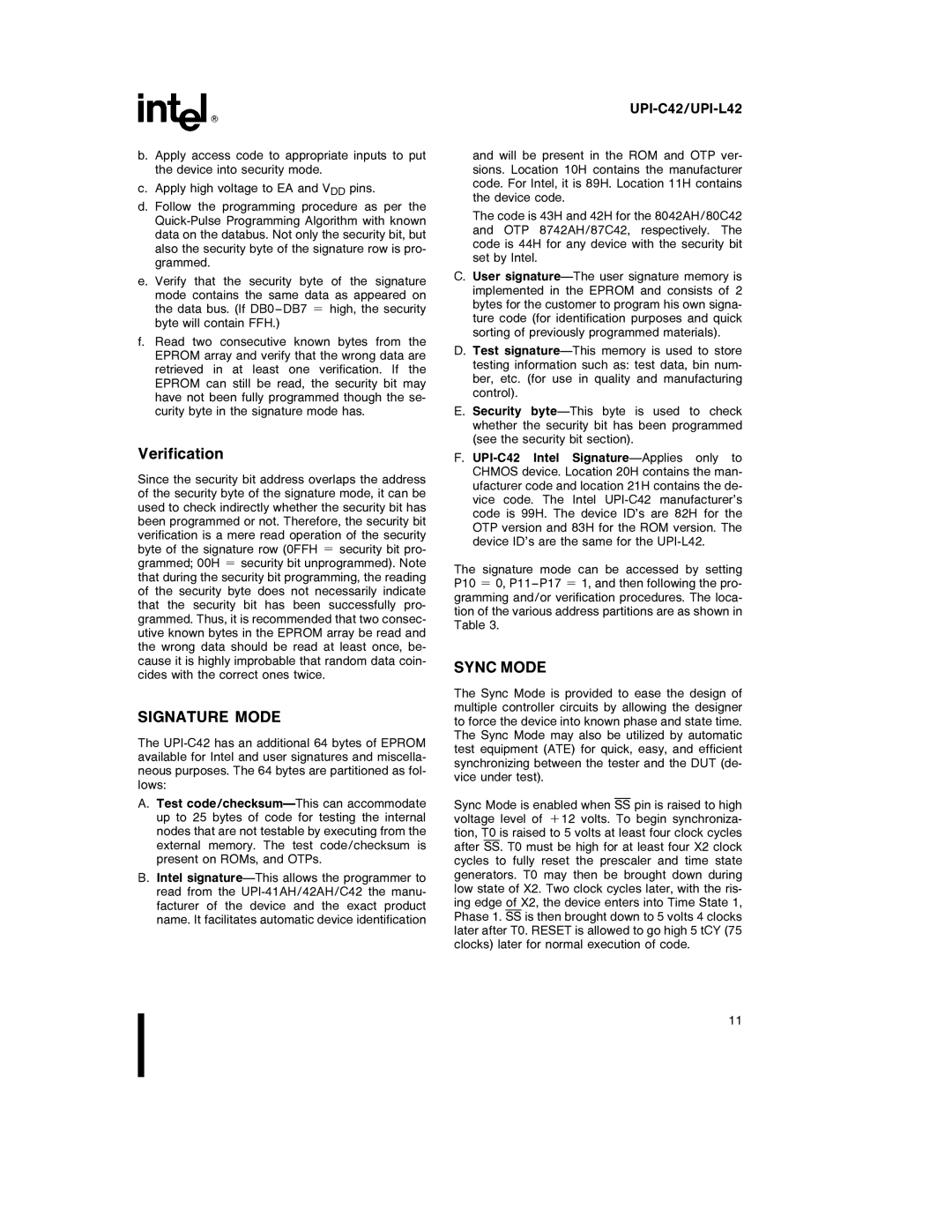
b. Apply access code to appropriate inputs to put the device into security mode.
c.Apply high voltage to EA and VDD pins.
d.Follow the programming procedure as per the
e.Verify that the security byte of the signature mode contains the same data as appeared on the data bus. (If DB0 – DB7 e high, the security byte will contain FFH.)
f.Read two consecutive known bytes from the EPROM array and verify that the wrong data are retrieved in at least one verification. If the EPROM can still be read, the security bit may have not been fully programmed though the se- curity byte in the signature mode has.
Verification
Since the security bit address overlaps the address of the security byte of the signature mode, it can be used to check indirectly whether the security bit has been programmed or not. Therefore, the security bit verification is a mere read operation of the security byte of the signature row (0FFH e security bit pro- grammed; 00H e security bit unprogrammed). Note that during the security bit programming, the reading of the security byte does not necessarily indicate that the security bit has been successfully pro- grammed. Thus, it is recommended that two consec- utive known bytes in the EPROM array be read and the wrong data should be read at least once, be- cause it is highly improbable that random data coin- cides with the correct ones twice.
SIGNATURE MODE
The
A.Test
B.Intel
UPI-C42/UPI-L42
and will be present in the ROM and OTP ver- sions. Location 10H contains the manufacturer code. For Intel, it is 89H. Location 11H contains the device code.
The code is 43H and 42H for the 8042AH/80C42 and OTP 8742AH/87C42, respectively. The code is 44H for any device with the security bit set by Intel.
C.User
D.Test
E.Security
F.
The signature mode can be accessed by setting P10 e 0, P11 – P17 e 1, and then following the pro- gramming and/or verification procedures. The loca- tion of the various address partitions are as shown in Table 3.
SYNC MODE
The Sync Mode is provided to ease the design of multiple controller circuits by allowing the designer to force the device into known phase and state time. The Sync Mode may also be utilized by automatic test equipment (ATE) for quick, easy, and efficient synchronizing between the tester and the DUT (de- vice under test).
Sync Mode is enabled when SS pin is raised to high voltage level of a12 volts. To begin synchroniza- tion, T0 is raised to 5 volts at least four clock cycles after SS. T0 must be high for at least four X2 clock cycles to fully reset the prescaler and time state generators. T0 may then be brought down during low state of X2. Two clock cycles later, with the ris- ing edge of X2, the device enters into Time State 1, Phase 1. SS is then brought down to 5 volts 4 clocks later after T0. RESET is allowed to go high 5 tCY (75 clocks) later for normal execution of code.
11
